Bean Borlotto Lingua di Fuoco
$4.49
Phaseolus Vulgaris
- Seed Count 15
- Meaty, Creamy Bean
- Annual
In stock
Description
Bean Borlotto Lingua di Fuoco is a very popular, high yielding borlotti bean. The plump seeds within the pods, when mature ,will have a white background decorated with speckles of red. Like many beans, it can be picked young at approximately fifty-six days from planting and used as a snap or green bean or it can be allowed to fully mature and be shelled for its internal seeds at about seventy-five days.
Rich in protein and carbohydrates, a fact that makes them an excellent nutritional substitute for meat in main dish soups, stews, and braises. They offer a meaty yet creamy texture and a nutty, somewhat sweet bean flavour. Their flavour and texture pairs well with tomatoes, greens such as kale, spinach, fresh herbs like basil, parsley and sage, and parmesan and pecorino cheeses.
Borlotti Beans go by different names, and their most popular other name is Cranberry Beans due to their pinkish-red colouring.
| Method: Sow direct | Soil Temp: 16°C - 30°C |
| Cool Mountain: Oct - Dec | Position: Full sun |
| Arid: Sep - Jan | Row Spacing: 20cm |
| Temperate; Sep - Jan | Planting Depth: 10mm |
| Sub Tropical: Aug - Apr | Harvest: 70 Days |
| Tropical: Apr - Jul | Plant Height: 1m |
Growing Climbing Beans
Climate and Timing:
- Planting Time: In temperate regions, late spring to early summer is best.
- In subtropical areas, you can plant beans from late winter to early autumn.
- Temperature: Beans thrive in temperatures between 15°C to 30°C. They require a frost-free period to grow effectively.
Soil Preparation
- Soil Quality: Ensure the soil is well-draining with good fertility. Beans prefer a neutral pH of 6 to 7.
- Improving Soil: Before planting, enrich the soil with compost or well-rotted manure. Beans fix nitrogen into the soil, but added organic matter supports initial growth.
Planting Process:
- Sow seeds directly once the danger of frost has passed.
- Plant seeds about 1 cm deep and space them 20 cm apart within rows 20 cm apart.
- If using a trellis or teepee system, space these supports accordingly before planting.
Support Systems:
- Use sturdy 1 m high supports 1 m as the weight of a vine full of pods is very heavy
Watering and Maintenance:
- Watering: Regular watering is crucial, particularly during flowering and pod set.
- However, avoid waterlogging, which can drown roots or promote fungal diseases.
- Mulching: Apply mulch to retain soil moisture, regulate temperature, and reduce weed growth.
Fertilisation and Care:
- While beans generally do not require much fertilisation due to their nitrogen-fixing ability, a light application of a balanced organic fertiliser at the start of the growing season can help.
- Regularly inspect plants for signs of common pests like aphids or spider mites and manage with appropriate organic treatments if necessary.
Harvesting:
- Beans typically mature within 70 days after planting.
- Harvest when the pods are firm and before seeds inside begin to bulge, ensuring tender beans.
- Picking pods regularly encourages further production.
Companion Planting
Compatible Plants:
- Corn: Provides natural supports for beans to climb, forming a symbiotic relationship where beans fix nitrogen, boosting corn’s growth.
- Squash and Pumpkins: With their broad leaves, these plants help control weeds by shading the soil and maintaining moisture.
- Carrots and Radishes: Utilise vertical garden space efficiently, with roots growing underground while beans climb upward.
- Marigolds: Known for their pest-repellent properties, they attract beneficial insects and deter harmful nematodes.
Plants to Avoid:
- Alliums (Garlic, Onions): These can inhibit bean growth due to the production of chemicals that negatively impact bean roots.
- Beets: They compete for similar nutrients, potentially stunting each other’s growth.
Additional Tips:
Crop Rotation:
- Rotate beans with other crops to prevent pest buildup and improve soil nutrients.
- Avoid planting where legumes have grown in the past two years.
Pest and Disease Management:
- Implement pest control measures early. Use natural or organic pesticides if necessary and encourage predators such as ladybirds.
- Prevent diseases through proper spacing to ensure good air circulation and by removing diseased plants promptly.

Order Times
Seed orders are normally dispatched within three business days. You will receive an email when seeds are mailed out.
Packaging
No plastics are used in our seed envelopes or postage materials. Everything is compostable and fully bio degradable.
Postage Days
Seeds are mailed out Monday to Friday at 1pm. Except for the Friday of long weekends.
Postage Times
WA 2-3 Days: SA,NT 3-5 Days: NSW, ACT, QLD, VIC: 5-7 Days
Carrier
We use Australia Post Letter Postage for the majority of orders

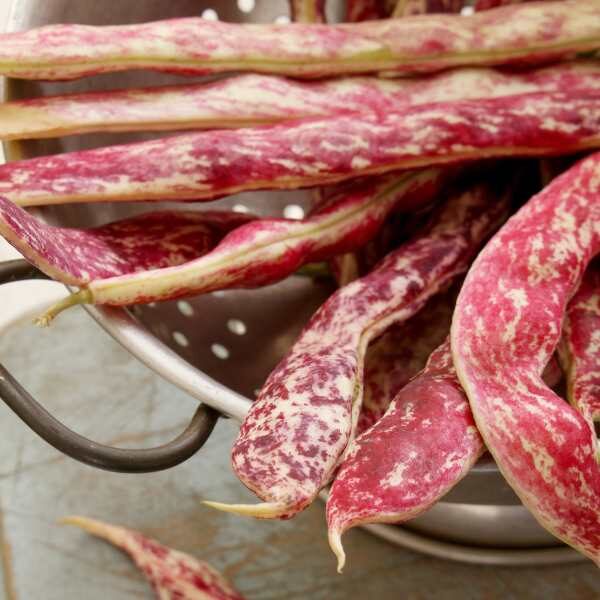



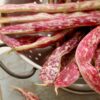

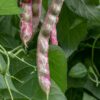
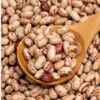

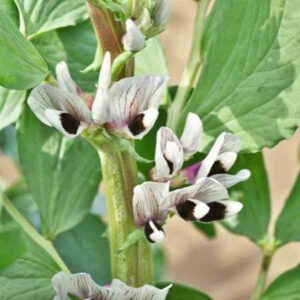
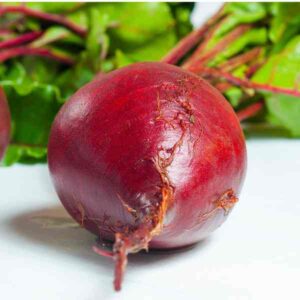

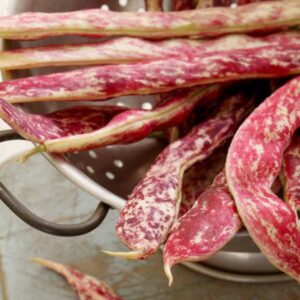
4 reviews for Bean Borlotto Lingua di Fuoco